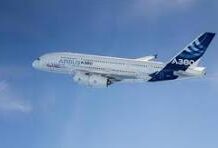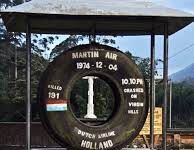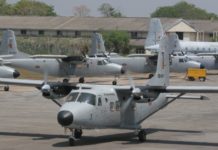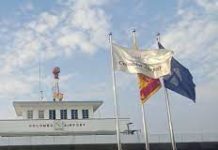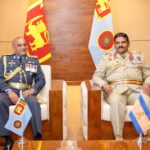In 1993 Bernard Ziegler flew what was then the longest recorded flight by a civil aircraft when he piloted an Airbus 340-200 around the world in 48 hours, stopping once in Auckland. Yet the veteran French fighter pilot and director of the multinational aircraft manufacturer Airbus was self-deprecating about his abilities in the cockpit, attributing most of the skill involved to the automated systems he had developed. “After all, airline pilots are no more than taxi drivers,” he said.
The aeronautical engineer did more than anyone to modernise and automate the control of
passenger aircraft, but he had to take on the pilots to do it. Some took it personally that Ziegler had developed systems to replace manual flight controls with computers that could
send commands to stabilise the aircraft’s fins without the pilots’ knowledge and even override their errors. Ziegler’s most significant innovation was the use of fly-by-wire (FBW) flight control computers in commercial aircraft. These replaced mechanical levers that pulled cables and rods operated by hydraulics with electrical signals known as “wires”. It was based on technology that had first been developed by NASA in the 1960s for the lunar landing training vehicle, which Neil Armstrong famously crashed. Eventually, FBW was incorporated into the Anglo-French programme to develop the supersonic aircraft Concorde.
Many of the same engineers who went on to work for Airbus pushed for its introduction on a wider scale in passenger aircraft and none pushed harder than Ziegler.
The first Airbus application of electrical fly-by-wire was on the A310 launched in 1982. With the introduction of digital fly-by-wire on the A320 in 1987, controls were no longer directly driven by the pilot’s control column of levers. Pilots would now fly the A320 aircraft using a flight control stick (often called a joystick, much to pilots’ annoyance) positioned at the side of each pilot. The side stick would trigger mechanical levers that are converted into digital signals, still giving the pilot the feeling of controlling the aircraft manually in pitch and roll. The stick could also work on autopilot in a cockpit where computer screens had replaced the traditional dials.
Ziegler was also instrumental in the introduction of flight envelope protection, a failsafe system preventing the pilot from applying forces on the aircraft outside of the safety margin. With the system in place pilots could not stall the engine, overspeed, spin or overbank because each manoeuvre would be checked by the computer and errors would be corrected. Though the changes led to much more expensive aircraft, there were added benefits, including lighter airliners, owing to heavy cables no longer being needed. There were also significant fuel savings because the onboard computers ensured that the aircraft flew at optimal aerodynamic efficiency, reducing unwanted drag and oscillation as well as wear and tear on the aircraft.
Some pilots were not won over by the change in philosophy, which effectively meant that at least seven computers flew the aircraft while the pilot monitored it. Some feared they would become so disengaged from the aircraft they were supposed to be flying that in an emergency they would not be able to react effectively. John Cox, a former US Airways pilot and aviation consultant, said: “I’m happy to have the aeroplane tell me, ‘You’re doing something we shouldn’t be doing’ but I’m not happy that I can’t necessarily override the software easily if I see a safer course of action than the computer does.” Other pilots were more vituperative. “The problem,” said one, “is that while pilots try very hard to stay alive when handling an aircraft, they get bored, disincentivised and deskilled when reduced to a monitoring role. Computers, on the other hand, never get bored with monitoring
but do not mind killing themselves.”
Captain Joe Diebolder, a pilot who runs an aviation YouTube channel, lamented the fact that
pilots could not feel the force of the controls feeding back to them on digital fly-by-wire aircraft: “Hands down it is easier to fly an Airbus than a Boeing, but I like to feel what the plane is doing. You are more connected with the plane when flying a Boeing.” Critics of Ziegler’s innovations would question Airbus’s safety record after an A320 crashed in the
Vosges Mountains in eastern France in 1992, killing 87 of the 96 people on board. Yet in 2006 Ziegler was cleared of involuntary manslaughter; technology was not found to be the main factor in the disaster.
Ziegler countered that the changes to inflight controls that he had introduced had greatly
improved safety, but that in very rare cases pilot error could still cause accidents. The safety controls of the Airbus A320 were cited as a key factor in the rescue of all 155 people onboard without serious injury after US Airways Flight 1549 lost all engine power having struck a flock of birds after taking off from New York’s LaGuardia airport in January 2009. Pilots Chesley Sullenberger and Jeffrey Skiles safely glided the plane into a perfect landing on the Hudson River off midtown Manhattan in a manoeuvre that came to be known as the “Miracle on the Hudson” and was dramatised in the 2016 film Sully, starring Tom Hanks.
“There is no question that the system had a profound effect on Flight 1549,” wrote William
Langewiesche in Fly By Wire, his book about the Miracle on the Hudson. “The aircraft’s flightcontrol computers performed remarkably well, seamlessly integrating themselves into
Sullenberger’s solutions and intervening at the very end to guarantee a survivable touchdown.”
Indeed, many of Ziegler’s innovations as senior vice-president for engineering were adopted by other manufacturers. Airbus’s great rival Boeing bowed to the inevitable in 1994 by introducing digital fly-by-wire on its latest model, the Boeing 777, although the system allowed pilots to completely override the computerized flight control system. Ziegler did not approve. Bernard François Gilles Ziegler was born in Paris in 1933. His father, Henri, a pilot, was a member of the French Resistance and in 1944 was made commander of the Free French Air Force in London. He would work in aviation after the war and go on to become a founder director of Airbus in 1970. His son studied engineering at the École Polytechnique, graduating in 1954, and undertook his pilot training at the École de l’Air. He married Jacqueline, née Pujol, in 1957 and she survives him along with their three children, who lead private lives.
He saw action in Algeria during the war of independence and was decorated twice for bravery. His record as a pilot was tarnished in 1961 when, during a training flight, his Thunderstreak jet tore the hauling cable of the Vallée Blanche cable car near Mont Blanc. Six people were killed. Ziegler was exonerated after an investigation, but soon left the French air force to study aeronautical engineering at the École Nationale Supérieure de l’Aéronautique in Toulouse. He then attended the flight test pilot school EPNER, before taking up a role as chief test pilot for the Dassault Mirage G. He joined Airbus in 1972 to set up the company’s test pilot division, carrying out the first test flights of the A300, the aircraft that was the result of a design collaboration involving engineers from France, Germany, Britain and the Netherlands. It would come into service in 1974 and transform the fortunes of Airbus. As director of flight tests he would also oversee trials of the
later A310, A320 and A340. Passionately believing in collaboration of flight test crews and design engineers, he created the operating engineering group at Airbus in 1975. He assumed control of all technical management in 1985 and championed components made of lightweight, synthetic materials.
He retired in 1997, leaving a legacy of innovation that has been cited as a key factor in Airbus surpassing Boeing to become the world’s largest airline manufacturer.
Bernard Ziegler, pilot and aeronautical engineer, was born on March 12, 1933. He died of
undisclosed causes on May 4, 2021, aged 88.
Source Courtesy: https://www.thetimes.co.uk/article/bernard-ziegler-obituary-lhzx5txbc




